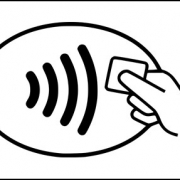Is the rise in contactless cards use killing off cash?
Is the rise in contactless cards use killing off cash?
The UK Card Association revealed that more than one billion contactless transactions were carried out in the UK last year. The research also shows that around one in thirteen purchases are made on contactless, but this massively increased to one in eight purchases throughout December.
It is currently estimated that more than half of the nation’s debit and credit cards are fitted with the contactless function which explains why the technology has seen a huge rise in popularity, with more money being spent via contactless last year than in the previous seven years combined.
One f the most common ways Brits like to use contactless technology is on the London underground where more than a million journeys are funded this way every single day. Transport for London (TFL) claim to be the first transport authority to introduce contactless ticketing.
About contactless
Shoppers can use contactless to pay for purchases of £30 or less by simply holding their card near a compatible sensor. No PIN is required, making it super quick, easy and convenient for retailer and consumer. So will contactless eventually replace the need for loose change? Will it gradually replace cash altogether? Let’s look at some facts about the UK’s current favourite payment method…
•The spend limit was set at £20 until September 2015, when it was increased by £10. We’re keen to see if the surge in contactless payments will encourage banks to increase it further.
•In France, the limit is €25 (£18), In Canada it is set to $100 (£48) and in Australia it is limited to $100 (£45).
•A similar technology makes it possible to pay with contactless for goods using connected smartphones, watches and keyfobs.
•£7.7billion was spent on contactless cards in the UK through 1.05 billion transactions last year.
Security issues with contactless
Recently, there have been an influx of security concerns with regard to contactless payments but the banking industry confirms that fraud committed through contactless payments is negligible.
Each contactless card has a built in security checker which requires manual PIN entry after multiple contactless purchases in order to verify the card user as genuine.
The consumer group, Which? recognise that although risks are low, a person could potentially fall victim to their card details being lifted if a fraudster stood in close enough proximity to commit this type of offence. Which? have advised consumers to protect their card details by wrapping the card in tin foil or placing it in a special foil-lined wallet.


